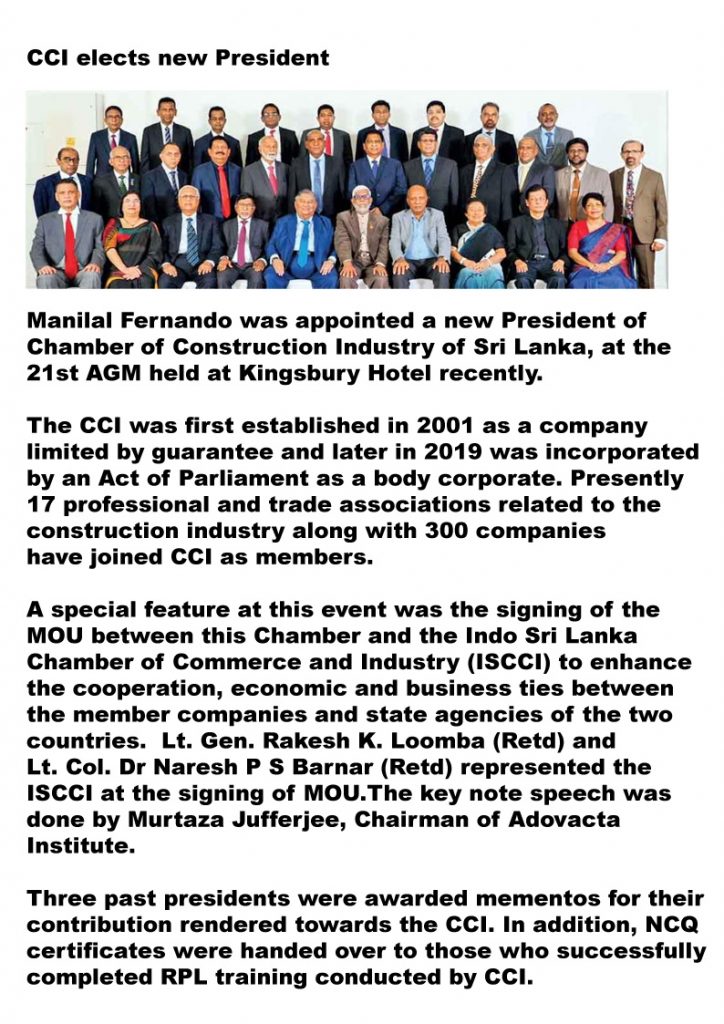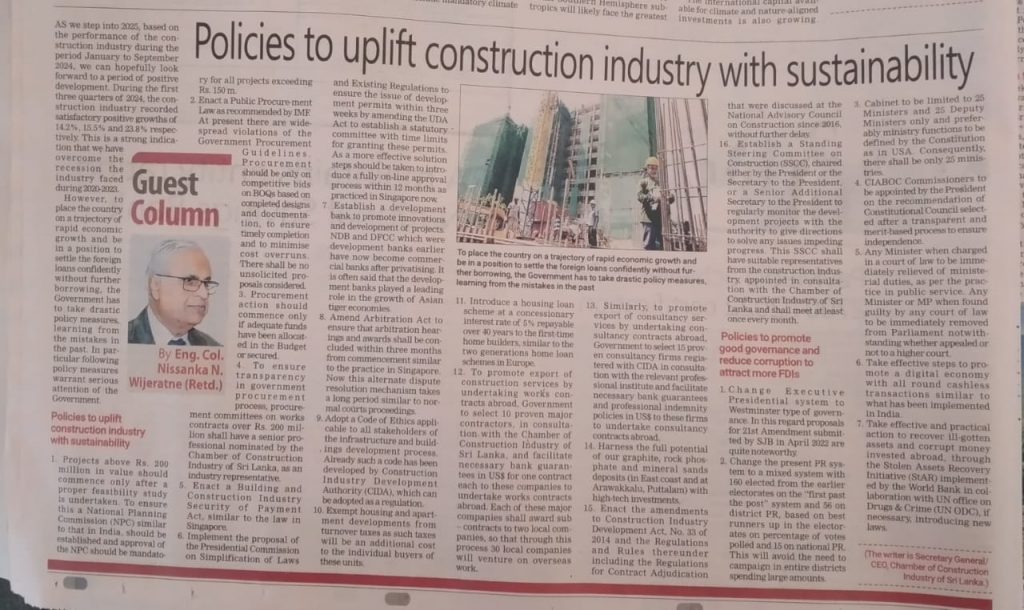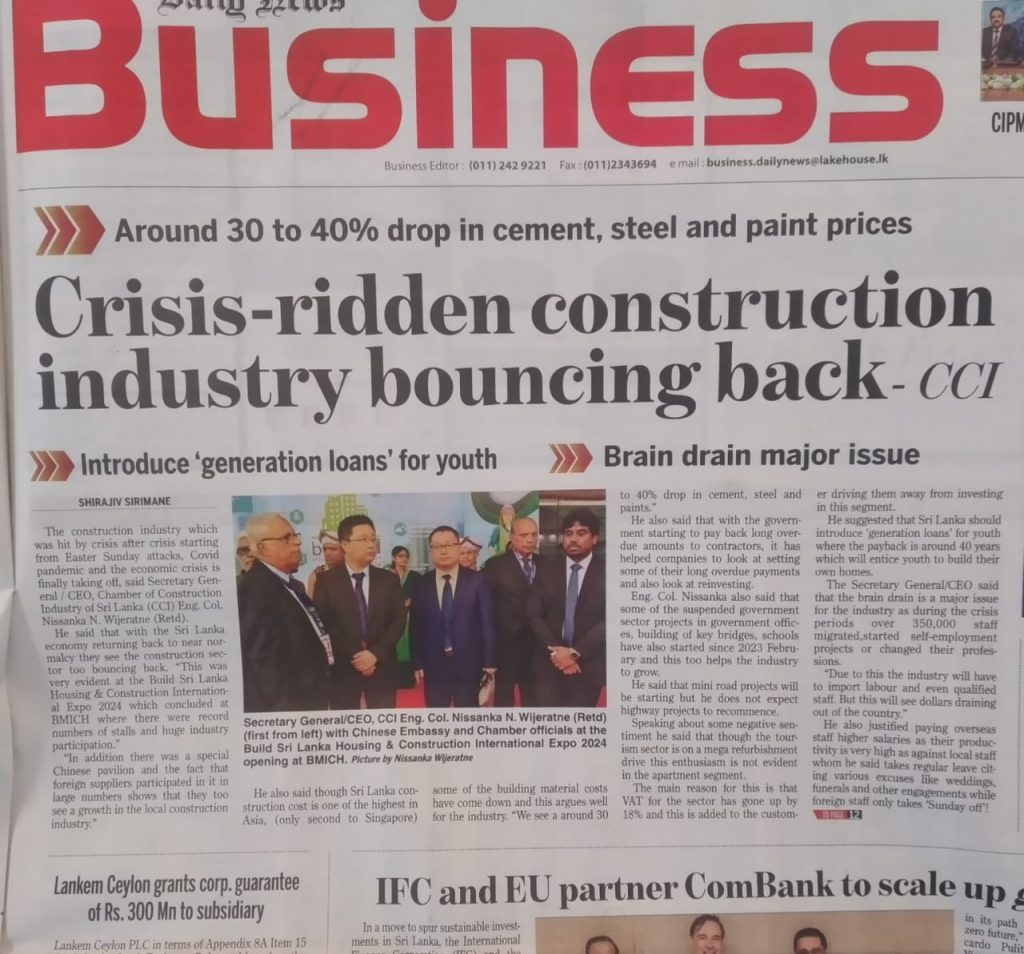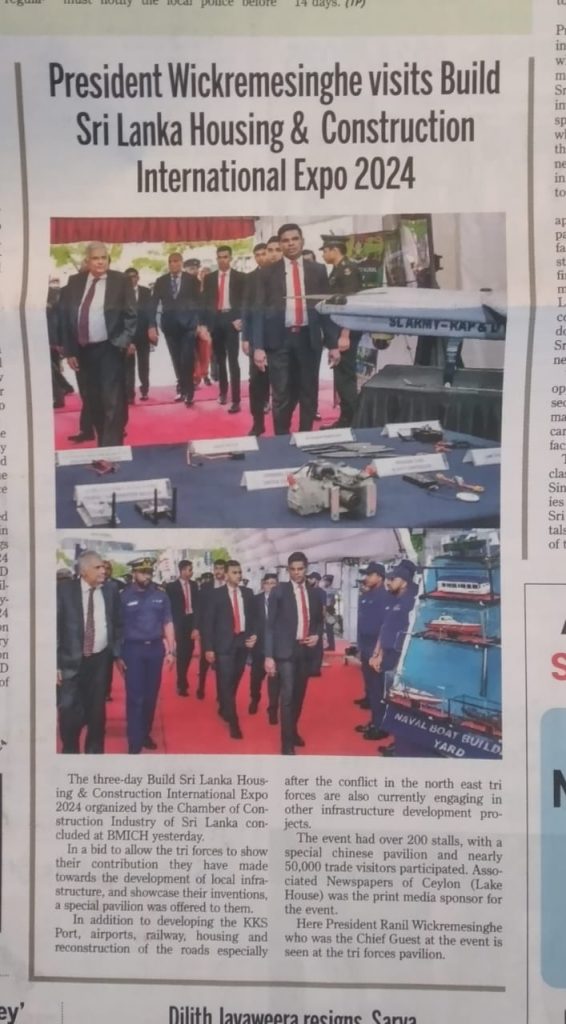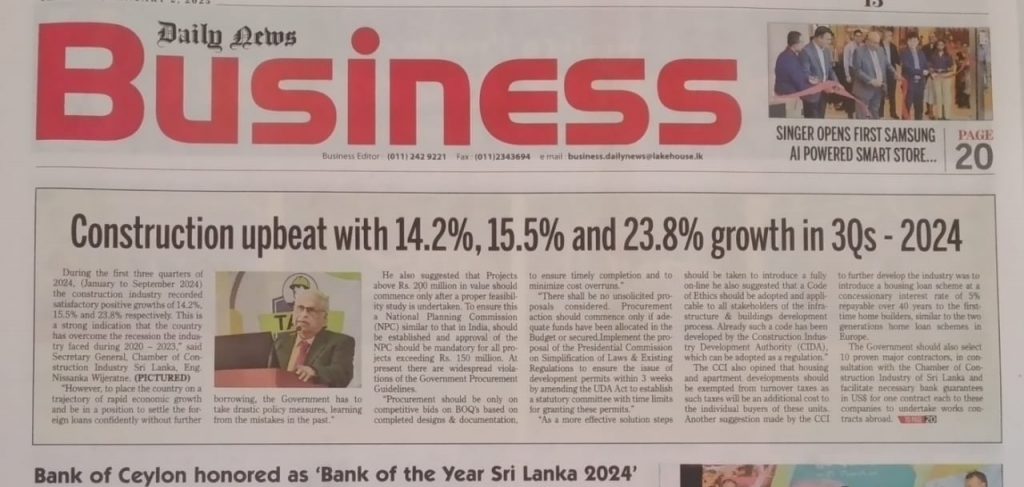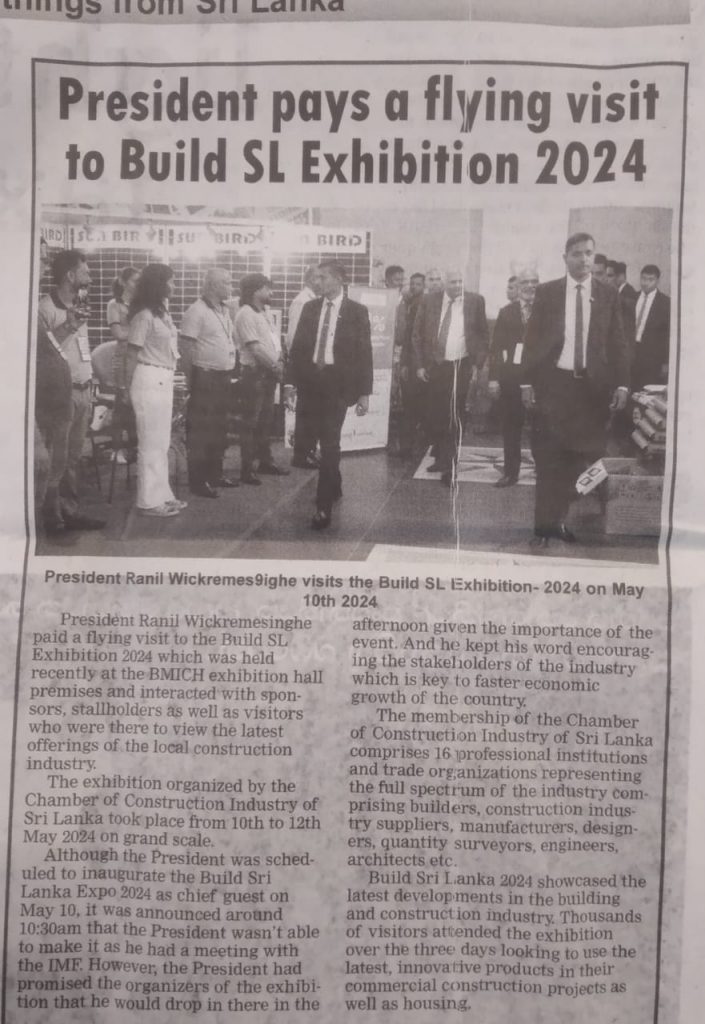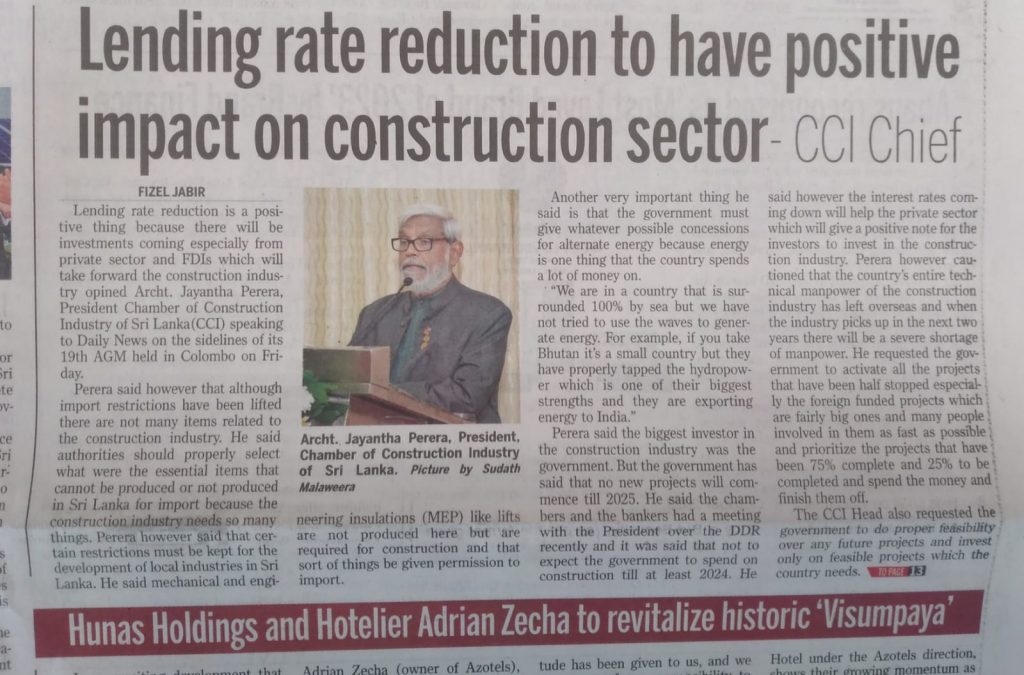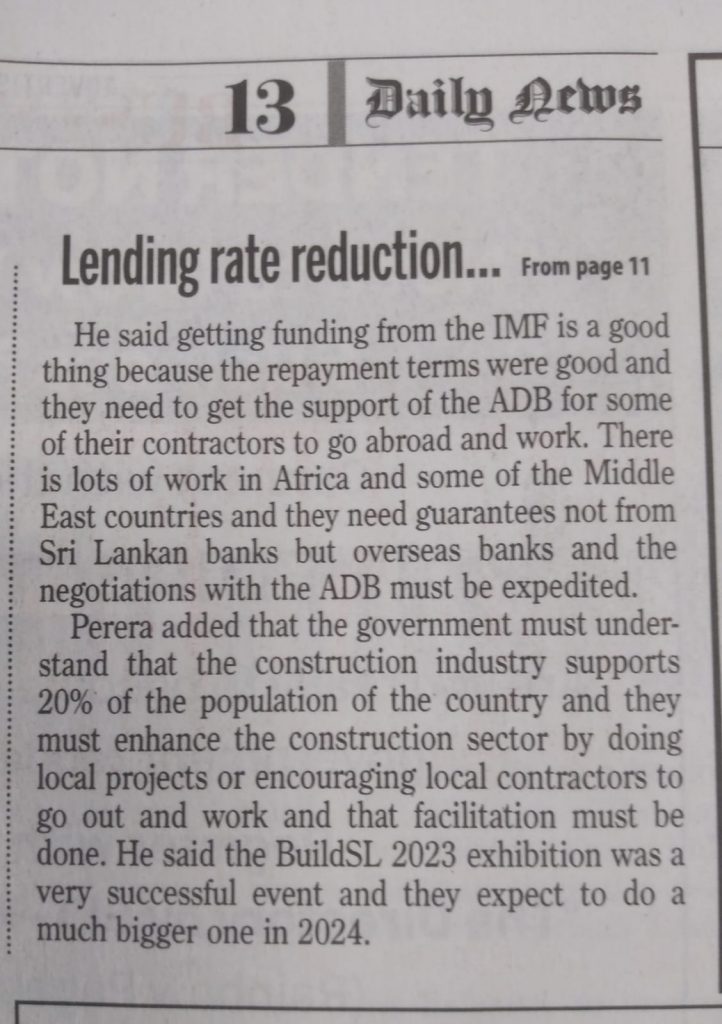CCI MEDIA PAGE

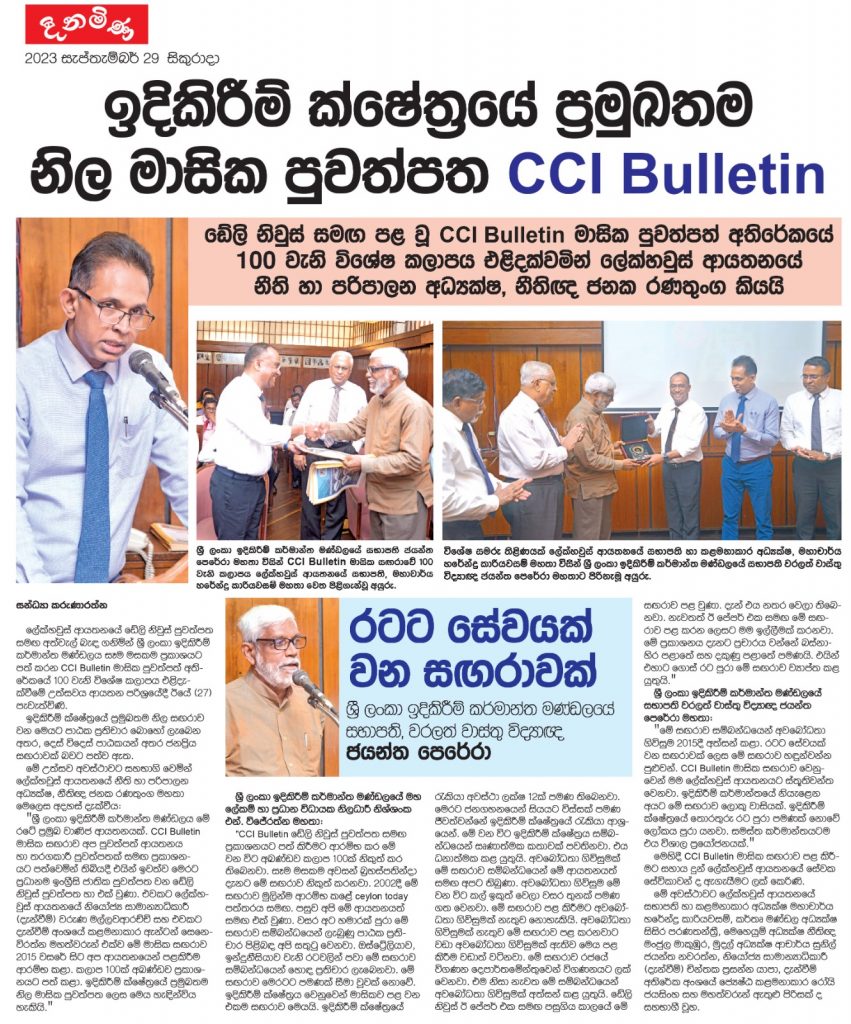
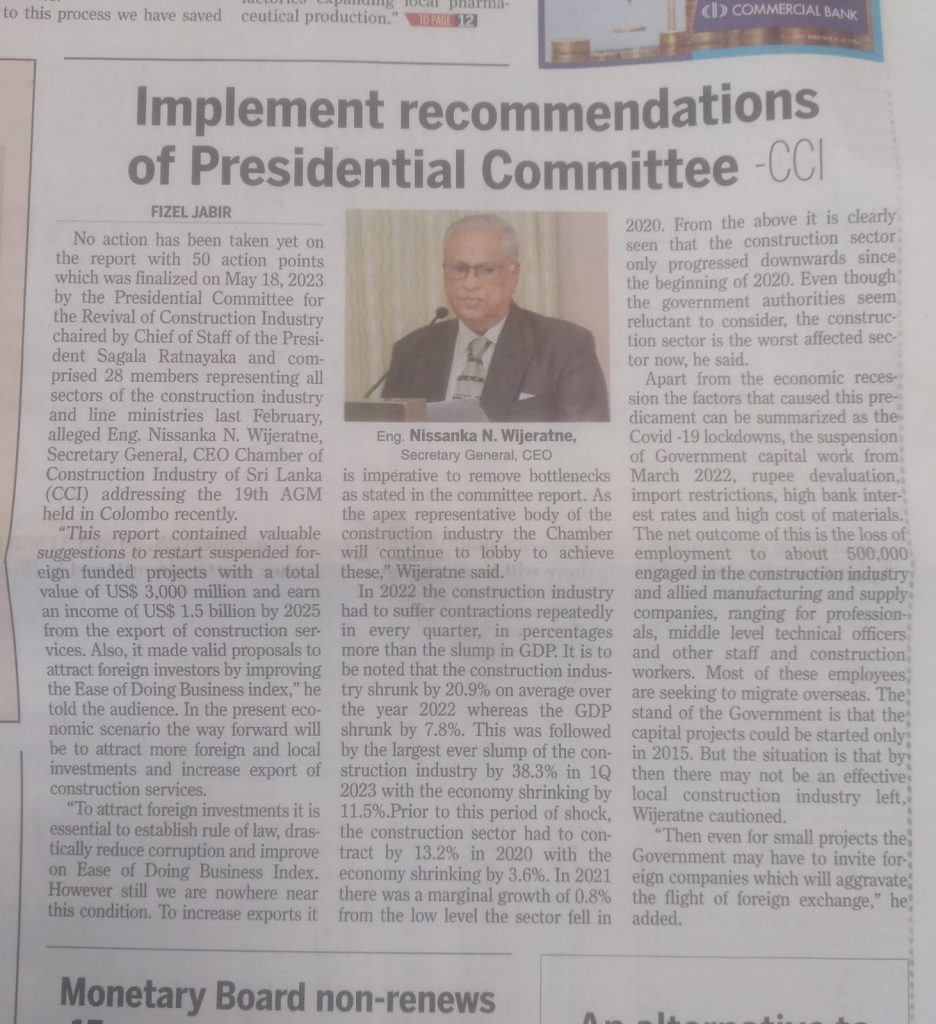


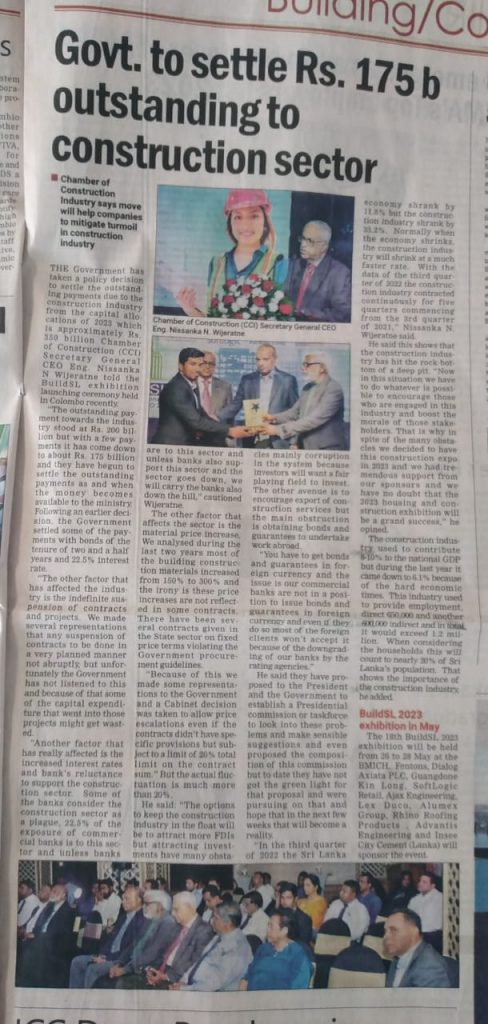
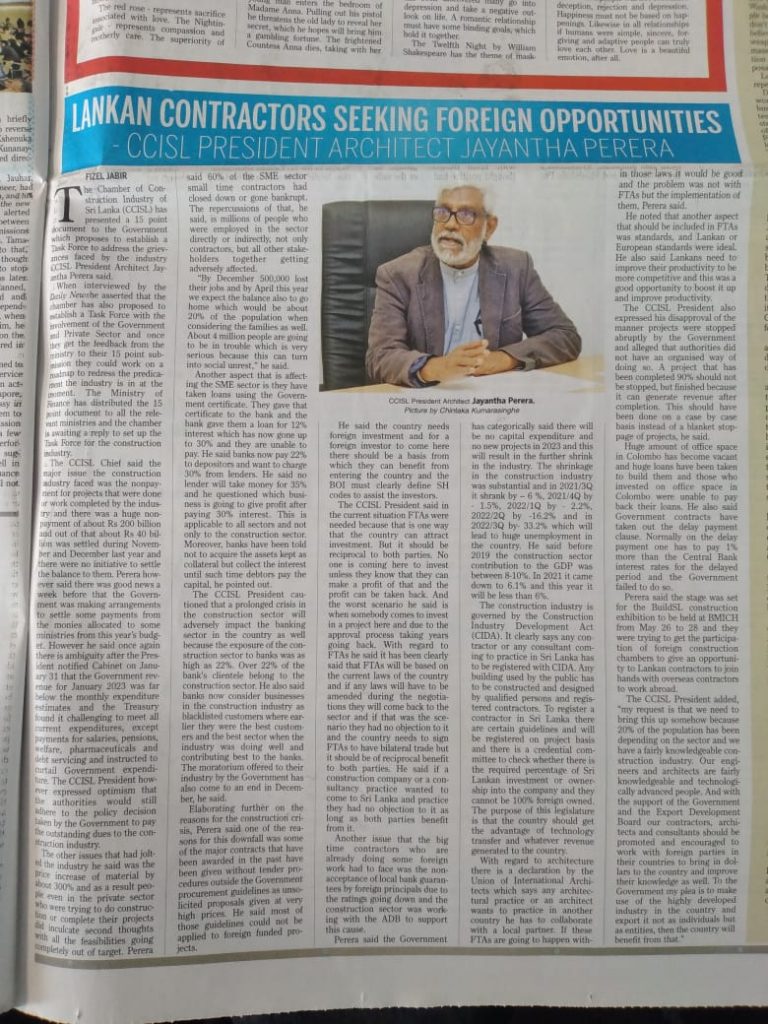
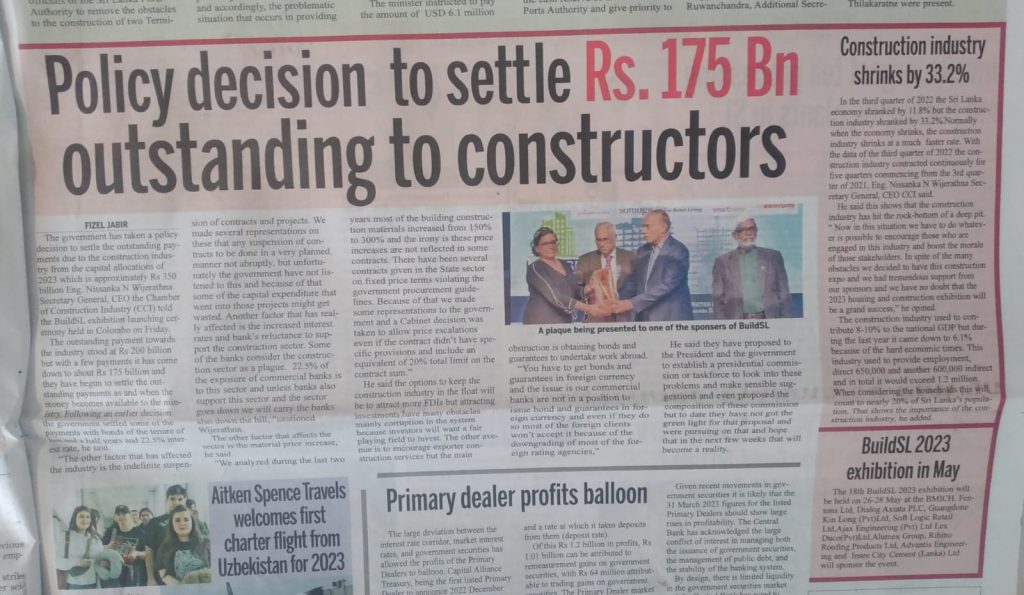
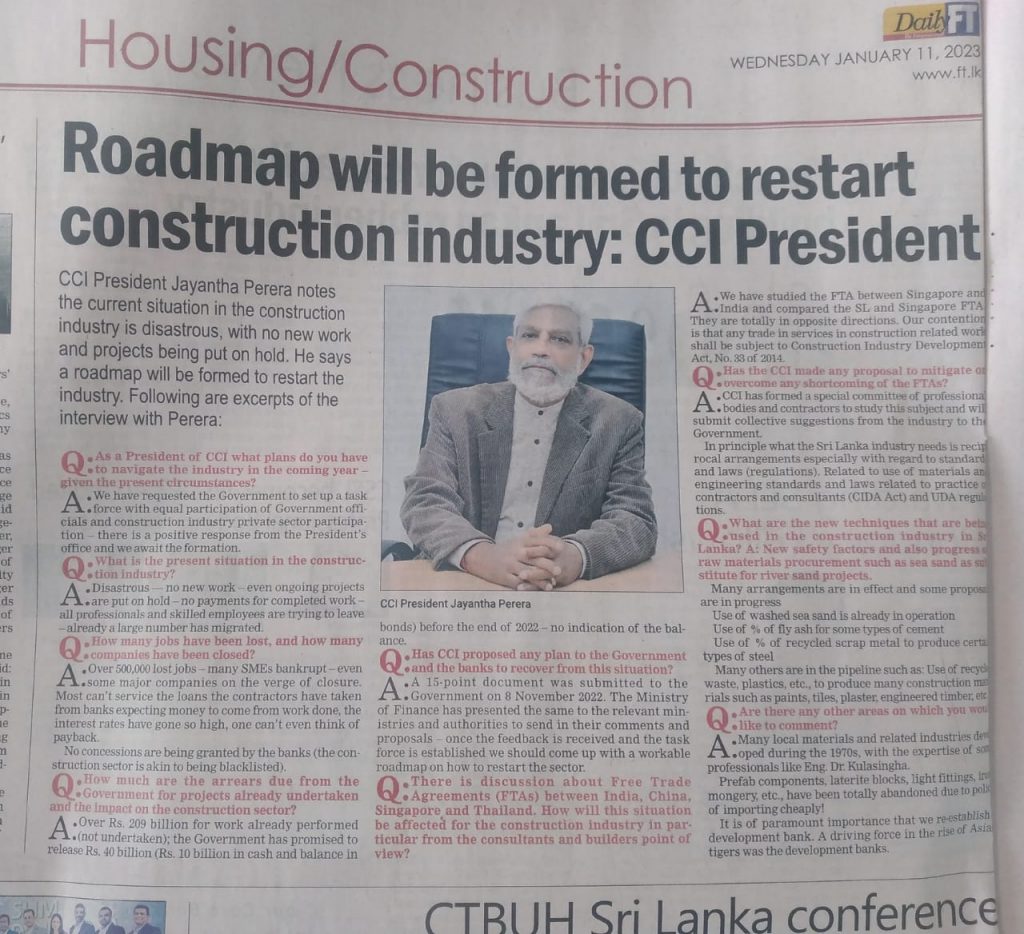
Construction Industry at Cross Roads

Secretary General / CEO
Chamber of Construction Industry of Sri Lanka
Economic ups and downs are felt to a greater extent by the Construction Industry than any other sector. This is amply evident from the economic data of the year 2020. In the of year 2020 when the national economy shrank by 3.6%, the construction industry shrank by 13. 2%.
It is also true that more investments in infrastructure development can trigger economic growth. This has been proven in many other countries during periods of economic recession.
In countries where statistics are available it can be seen that very often construction companies lead the bankruptcy rates. This can be attributed to the very nature of this industry which is saddled with the varying site conditions, greater exposure to weather conditions, large number of materials and equipment needed for a project and majority of work force changed from project to project. Another factor is due to competition construction companies are compelled to operate at low profit margins when compared to other industries. Due to this reason it is very important that the companies are able to claim any unforeseen price increases when undertaking a construction contract.
From official statistics of Construction Industry Development Authority (CIDA) it is clear that the construction costs increased by 23.5% during 2021. But many Quantity Surveyors who are estimating in the construction companies claim that the CIDA indices do not reflect the actual market prices and the real increase in cost in 2021 is about 35 – 40%. On top of this the currency rate which stood at Rs. 203 to 1US$ in early March 2022 is now Rs. 285.00 to 1US$.This is a devaluation
by 40%. The price of diesel increased from Rs.121 to Rs. 176 by 45.5%. As the combined effect of devaluation and increased transport cost, prices of all imported construction materials will be increased by at least 50% due to the Rupee devaluation. It can be seen that already between December 2021 and 18th March 2022 cement price increased by 49% from Rs. 1275/= to Rs. 1900/=, R/F steel price by 33.6% from Rs.250,000/= per Mton to Rs.334,000/= and structural steel by 41% from Rs. 330,000/= per Mton to Rs. 465,000/=. These are basic materials used in construction projects.
It is to be noted that in our country even for every construction material produced locally there is an import requirement. Reinforcing steel bars are produced from imported steel billets. For cement production imported clinker, slag and fuel is needed. Only the Puttlam factory of Insee is using local lime stone to some extent. But it consumes 100MW of electricity which is generated by imported fuel. It is the same with manufacturing of other materials. Varying percentages of imported items will be required. In general it could be said that our construction industry depends 75% on imports. As such the Rupee devaluation and fuel cost increase will have a devastating impact on the construction industry. In this backdrop it may be prudent for the Government to prioritize and reconsider some of the development projects. The need of the hour is to concentrate only on foreign funded projects and projects with a reasonable economic rate of return (ERR) rather than proceeding with political projects.
To mitigate effects of cost increases last year, due to the many requests of the Chamber of Construction Industry of Sri Lanka and other like associations, the Cabinet of Ministers decided to reimburse cost increases, based on the CIDA formula on all contracts awarded by State Organizations upto a maximum of 20% of the total construct sum, even if the contract specifically did not provide so. It is reported that even this Cabinet decision is not observed by some State Organizations. Some have even indicated that they will pay this only on an Arbitration award. This attitude of the State Sector eventually will lead to mass unemployment among construction workers. It is important to note that the construction industry provide employment to nearly 650,000 direct and a further 325,000 indirect.
The other issue faced by the industry is the time consuming adjudication and arbitration process. These alternate dispute resolution (ADR) mechanisms were originally meant to be transparent and more expeditions resolution of disputes than going to courts. But now these have become as time consuming as the court proceedings, in certain instances Arbitration has taken upto 3 years. Just compare this with Singapore where an Arbitration has to be mandatorily completed within 3 months. If we are to attract more investments we need to have a more efficient mechanism for ADR.
Another, cause for alarm is the undue delays in payments. Construction companies claim that only on road and school building contracts the total outstanding payments exceed Rs. 50 Billion. As construction companies operate on relatively low profit margins it is of paramount importance that they receive timely payments. Most construction companies go bankrupt not because of no profits but due to the inability to manage the cash flow. To guard against this in Singapore a ‘ Construction Industry Security of Payments Act” has ben enacted. Attempts by the Chamber of Construction Industry of Sri Lanka to have a similar law passed here has been to no avail to date. During these turbulent times it is imperative to have such an Act to protect the domestic construction industry.

